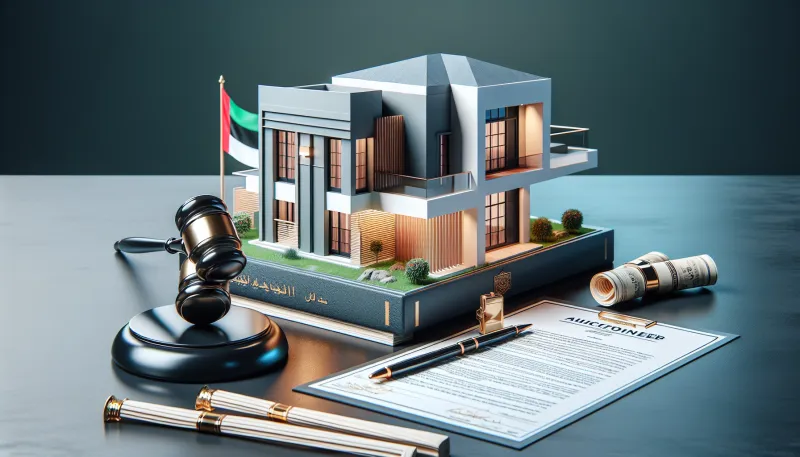
How to insure a home in the UAE: A comprehensive guide
Insuring your home in the UAE is a vital step in protecting your valuable investment from unforeseen events such as fire, theft, natural disasters, or accidental damage. Understanding the local insurance landscape and the various options available can help you make an informed decision and ensure your property and belongings are adequately covered.
- Understanding home insurance in the UAE
- Types of home insurance available
- Legal requirements and regulations
- Factors influencing home insurance premiums
- Steps to choose the right home insurance policy
- How to apply for home insurance in the UAE
- Tips for lowering your home insurance cost
- What to do in case of a claim
- Popular home insurance providers in the UAE
Understanding home insurance in the UAE
Home insurance in the UAE generally covers damages to your building and, in many cases, the contents inside your property. Unlike some countries, home insurance is a voluntary service here, but it offers peace of mind against risks like fire, water damage, burglary, and even natural disasters such as storms. Additionally, some policies provide liability coverage for accidents occurring on your property.
Types of home insurance available
There are typically two main types of home insurance available in the UAE:
- Building insurance: Covers the structural aspects of your home, including walls, roof, floors, and permanent fixtures.
- Contents insurance: Protects your personal belongings and household items against theft, fire, or damage.
Some insurers offer combined policies that include both building and contents coverage for comprehensive protection.
Legal requirements and regulations
While home insurance is not mandatory by UAE federal law, certain freehold communities or mortgage lenders may require it as a condition for property ownership or financing. Additionally, Dubai's Real Estate Regulatory Authority (RERA) has set guidelines encouraging homeowners to have insurance for better protection within the community. Therefore, checking with your developer, community regulations, or bank before purchasing insurance is important.
Steps to choose the right home insurance policy
Choosing the right home insurance requires careful consideration:
- Assess your needs: Decide whether you need building cover, contents cover, or both.
- Compare providers: Look at different insurance companies, their reputation, and claim settlement history.
- Check policy inclusions and exclusions: Review what risks are covered and what is excluded.
- Consider additional coverage: Optional add-ons such as accidental damage or personal liability might be useful.
- Get multiple quotes: Use online tools or contact insurers directly to obtain and compare premium quotes.
How to apply for home insurance in the UAE
Applying for home insurance is generally straightforward:
- Gather property documents: Prepare title deeds, tenancy contracts, and valuation reports if available.
- Fill out application forms: Provide accurate details about your property, its value, and security features.
- Submit identification: Present valid Emirates ID and passport copies.
- Choose coverage and payment terms: Decide on coverage limits and whether to pay annually or monthly.
- Receive confirmation and policy documents: Review the policy terms upon approval and keep copies safe.
Tips for lowering your home insurance cost
There are several effective ways to reduce your home insurance premiums in the UAE:
- Install and maintain robust security measures, such as alarms and CCTV.
- Increase your policy’s deductible or excess amount to lower premiums.
- Maintain your property to reduce risks linked to damage or accidents.
- Consider bundling your home insurance with other policies like health or motor insurance for loyalty discounts.
- Regularly review and update your policy to avoid over-insurance.
What to do in case of a claim
If you need to make a home insurance claim in the UAE, follow these key steps:
- Notify your insurer promptly: Report the incident as soon as possible through phone, email, or their app.
- Document the damage: Take photos, videos, and gather evidence supporting your claim.
- Submit all required forms and documents: Provide claim forms, proof of loss, police reports if applicable, and repair estimates.
- Cooperate with assessors: Allow insurance surveyors to inspect your property and verify the claim.
- Keep copies: Retain all correspondence and receipts for your records.
Popular home insurance providers in the UAE
The UAE has many reputable insurance companies offering home insurance policies. Some popular providers include:
- AXA Gulf: Known for customizable plans and strong claims support.
- Oman Insurance Company: Offers comprehensive coverage options with speedy claim processing.
- RSA Insurance: Provides flexible policies catering specifically to expatriates and locals alike.
- Zurich Insurance Middle East: Recognized for its extensive network and professional service.
- MetLife UAE: Combines affordability with robust coverage features.
Always verify terms and service quality before selecting your insurer.
Real Estate Market Researcher in the UAE and Middle East
















